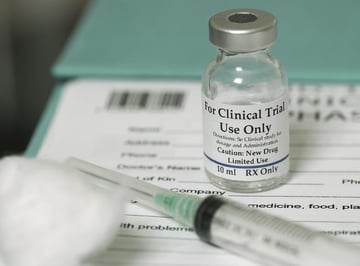Why Community-Based, Patient-Centered Care for Cancer Matters
4 min read

As the second leading cause of death in the United States, cancer touches the lives of family members and loved ones, not just the one in three people who will actually be diagnosed with the disease during their lifetime. Statistics show over 80% of patients with a cancer diagnosis choose treatment in a community-based setting. These patients choose community-based cancer centers for high quality, personalized, and convenient care. Affordability, access, and quality of life are also important considerations for newly diagnosed patients seeking treatment. As the American population continues to age and more patients with cancer are living longer, the need for community-based, patient-centered care should also continue to increase. Rocky Mountain Cancer Centers (RMCC), a leading oncology practice since 1992, is poised to handle this escalating need.
“We know that community oncology programs improve quality and outcomes, lower overall healthcare costs, lower the costs of prescription drugs, and offer more personal care,” said Dr. Lalan S. Wilfong, vice president, payer relations and practice transformation, The US Oncology Network.
Why Community Oncology Provides Value
There’s no doubt about it: Cancer care costs less in a community setting compared to a hospital. Research has repeatedly shown that oncology treatments in a hospital are higher than a physician’s office or community cancer center, whether patients are on Medicare or have private insurance. A 2017 overview of past studies found hospital costs averaged 38% higher. This higher cost is also consistent across treatment for different types of cancer. A 2018 paper in Journal of Oncology Practice found that the mean cost per patient per month for patients with breast, lung, or colorectal cancer was almost 60% higher in a hospital setting than in community oncology practices. And not only did the cost differential stay true across tumor types, it also remained irrespective of the type of treatment, even when compared to brand-name versus generic medications. Overall, despite the cost differential, patients can expect similar outcomes in relative survival rates.
“This cost differential shows that community cancer care is truly a great value,” Dr. Wilfong said.
Emphasizing Patient-Centered Cancer Care
When faced with a life-changing cancer diagnosis, the cost or value of treatment is often not at the forefront of many patients’ minds. That’s why pairing a focus on patient-centered care with value is such an attractive proposition.
“Providing truly patient-centered care involves the entire RMCC team, with outstanding results,” Dr. Wilfong said.
The American Society of Clinical Oncology and the Community Oncology Alliance released standards in 2021 as a benchmark for community patient-centered practices, also called oncology medical homes (OMHs), which RMCC has embraced. These core elements include:
 Adherence to chemotherapy safety standards
Adherence to chemotherapy safety standards - Continuous quality improvement
- Evidence-based and value-based treatment, including access to clinical trials
- Patient access to available and timely care
- Patient access to equitable and comprehensive team-based care
- Patient access to palliative and end-of-life care, with “goals of care” discussions
- Patient engagement in decision making for treatment, survivorship, and financial plans
By following these seven standards, RMCC is providing an OMH for patients, following in the established footsteps of the Patient-Centered Medical Home concept of care. This care delivery model starts when the patient with cancer first sets foot in an RMCC practice and continues throughout the entire treatment process and beyond.
“Our focus is on continuous quality improvement efforts, navigation, remote monitoring, and social work, from a patient’s initial consultation to survivorship or end of life,” Dr. Wilfong said.
Our Ongoing Focus on Quality Improvement
High-quality cancer care also means ongoing quality improvement.
“We believe in a holistic model, where the patient’s value of care consists of high-quality cancer care and service at a lower cost,” Dr. Wilfong said. “To ensure we reach the highest value, we retain an ongoing focus on quality improvement.”
Quality improvement begins with the care delivery model, which provides ongoing screenings and monitoring to assess patient experience and protocol compliance. From this monitoring, RMCC has determined where to take steps to further advance our levels of patient-centered care. Ongoing initiatives include:
- Better integrated palliative care
- Increasing access to clinical trials for patients, especially those from rural and diverse backgrounds
- Improving partnership with primary care providers for dual-risk patients
- Providing access to evidence-based geriatric assessments for older patients and families
- Increasing shared decision-making between patients and providers
The focus on clinical trials is key to improving patient outcomes. The physicians at RMCC have been leading clinical trials for years, and many are considered to be some of the top oncology experts in the country. The US Oncology Network provides access to one of the nation’s largest research networks, which means RMCC is able to help drive advances in precision medicine such as targeted therapies. Already, The US Oncology Network has played a role in studies that have led to over 100 FDA-approved cancer therapies. Working to expand access to these trials in Colorado will not only benefit current patients but future ones — patients with cancer at community-based oncology practices are a more diverse, “real-world” patient population than patients at urban, academic hospitals. And with treatment close to home, it’s easier for patients to risk experimental trials.
Improving Integration of Care
Patient-centered care is essential to the future of oncology and is a natural outgrowth of the expansion of multidisciplinary cancer care.
“Cancer care has become quite complicated,” Dr. Wilfong said. “Providers can no longer operate in silos with limited communication. It’s imperative that all the providers caring for a patient come together on a cohesive plan of treatment.”
Moving from multidisciplinary care to integrated care helps to ensure excellence in patient-centered practices. Providing value, quality, and affordable care is truly the benefit of community cancer care, over and above location.
“Our community-based cancer care drives value for patients, not just by lowering costs but by enhancing the quality of care and services we provide,” Dr. Wilfong said.